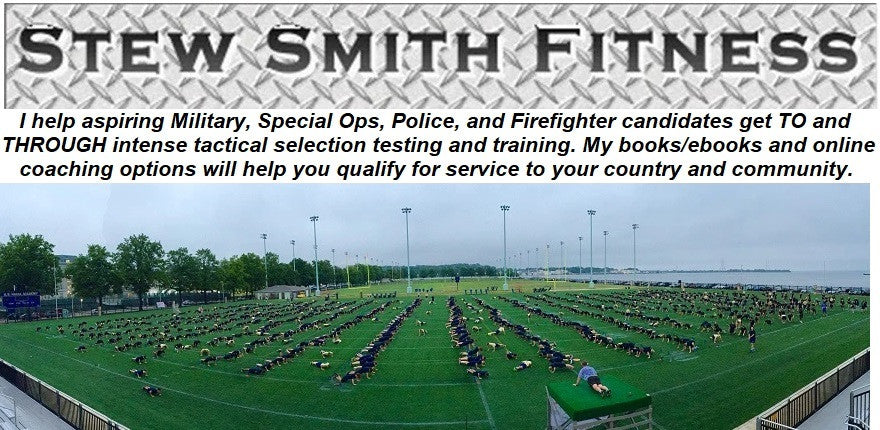When it comes to the relatively new term, “tactical fitness” or “tactical athlete”, you have to realize this has been a long time coming. For decades, training staff has had a goal of creating a mindset that every active duty / reserve military, police, and fire fighting member of a unit think of themselves like an athlete would. That mindset is still evolving in all the tactical professions and moving faster in the units that spend money on experienced training staff. The below diagram is an attempt to explain to operators and those considering the profession the needs and challenges of transitioning into a tactical athlete. Some will argue that in this diagram maybe longevity is not the ultimate goal, however in my opinion, you cannot be mission ready without physically, mentally, and emotionally capable personnel. If you compare the previous candidate tactical athlete post to the one below, you will see the candidate is not quite in a situation to require a higher level of stress mitigation. Sure, we all need to recover from the physical, mental, and emotional stresses of daily life, but with the operating tactical athlete, the stresses from the job are real and deserve an extra focus. Here are all the elements of the diagram explained:

For the tactical operator, the elements of tactical fitness have not changed. There is still a need to be good at everything: strength, power, speed/agility, cardio conditioning, muscle stamina, mobility and flexibility. But, remaining in an operating status will also require a thorough mastery of job skills and the right mindset coupled with recovery that focuses on disrupted sleep patterns, on the job stress, and life or death situations. The physical goal of the operator is not to crush a selection like the candidate, but to be able to perform all the required job skills and be in better conditioning than the opponent (enemy military and criminals). For the Fire Service, the operators must be able to perform is any austere environment against fire, accidents, and Mother Nature. The ability to save someone else and yourself from dangerous situations is the goal especially for the fire fighter, but truly speaking, all tactical athletes. “Train your body to save another,” is a popular quote within training facilities where tactical athletes prepare their bodies for their professions.
The elements of tactical fitness are arranged into related groups that are the sub-goals of longevity: Durability, Work Capacity, Physical Stability, Stress Mitigation. The subsets to longevity are further explained below:
Durability – The combination of strength, power, speed and agility work well together to build a bigger, faster, stronger athlete. But the combination also helps to create a level of durability especially when it comes to impact forces, load bearing strains, carries, crawls, rucking, ducking, and moving quickly in emergent situations. Obviously, to be active duty in the tactical professions does not mean you have to be a world class power lifter, but maintaining your strength and building power, speed and agility throughout certain cycles of the year will help with overall functionality with a more durable body. However, endurance and flexibility cannot be ignored when creating a tactical athlete with longevity.
Work Capacity – At the end of a long day, aerobic, anerobic cardio conditioning, endurance, and muscle stamina are critical to your ability to function for long hours at a time. Having a foundation of strength coupled with muscle stamina and a healthy heart and lungs will enable the tactical professional to perform a variety of tasks that require increased heart rate, highly repetitive movements, and plain old endurance. The aerobic conditioning is central to work capacity but an obvious link to strength, stability, and nutrition for fuel are equally important to successful long work hours.
Stability – Stability refers to the physical ability to perform job tasks efficiently and effectively. This is where repetition, training, coordination, and the right mindset all come into play. Depending upon the profession in the tactical realm, the job skills and training will differ greatly, but the ability to grasp the concepts both mentally and physically requires effort and the understanding that complacency kills. Training on the basics of the job is a daily requirement and you having stable joints, balance, proper technique with movements will ensure a greatly stability of the body during vital job skills (training or operational).
Stress Mitigation – Adding the subset of stress mitigation for the active duty tactical professional is a no brainer. Through the combination of nutrition, sleep, flexibility, mobility, and other physical recovery practices, combating the physiological effects of stress can be accomplished. However, the mental and emotional hormonal effects of stress can become chronic without proper balance of dealing with the physical, mental, and emotional effects together. Very often, physical activity, nutrition, and sleep are enough to help deal with the hormonal effects of stress. However, adding recovery tools and activities like yoga, meditation, mindfulness, and other resiliency skills, will build a stronger and healthier tactical athlete.
The important take away to remember for the tactical professions is that if you choose to make military, police, or fire a career, you WILL be older for longer than you are younger. Your ability to work off stress, sleep less, eat poorly will be reduced with age along with your metabolism. Gone are the days where you can outwork your diet. Actively pursuing RECOVERY, maintaining the tactical elements of fitness throughout the year (periodization) will enhance your ability to producing longevity in a career as a tactical athlete. Continuing to think of yourself as a “tactical athlete” will prove to be one of the most important mental processes new members of the military, special ops, police, fire and EMT can do for their own health and wellness.
